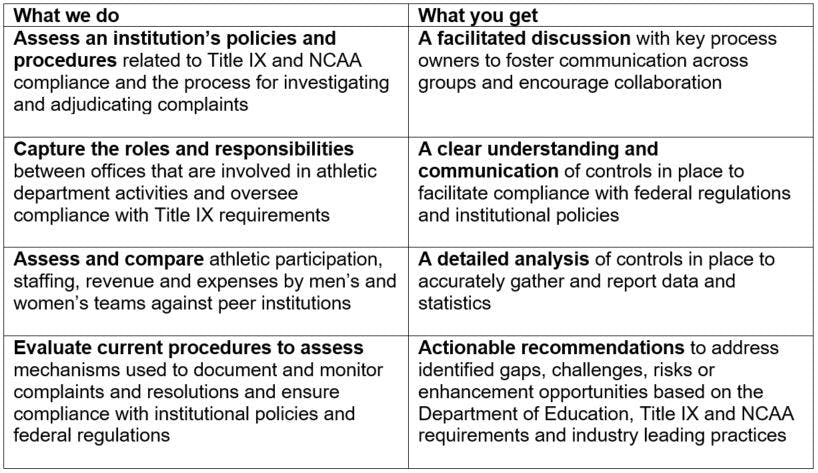
Addressing equity in collegiate women’s sports with NIL
Equity in collegiate athletics is a universal goal for higher education institutions (and for many, a compliance requirement). Recent legislation at the state level may impact equity between women’s and men’s athletic programs and future gender pay gaps in collegiate sports.
Women in collegiate sports
With respect to collegiate athletics, Title IX of the Education Amendments of 1972 (Title IX) seeks to ensure equitable opportunities for both women and men in terms of participation, scholarships and other benefits. Despite Title IX requiring athletic programs to operate in a manner free from discrimination on the basis of sex, inequities in college sports still exist.
At the 2021 National Collegiate Athletic Association (NCAA) basketball tournaments, a viral video depicted a stark difference between the men’s and women’s weight rooms. While the men had access to a fully-equipped gym, the women were initially given a room with a single rack of dumbbells and a few yoga mats.
Less than a month later, coaches from two of the top women’s volleyball programs complained about the setup of the NCAA volleyball tournament, including the absence of broadcast announcers for the first two rounds.
Rain delays during the 2021 Women’s College World Series for softball prompted conversations about the tournament’s schedule after the forecast forced an evening game into the early hours of the morning with the winner scheduled to take on their next opponent later that afternoon. The women’s series was set to last no more than a week, while the men’s College World Series spans nearly two weeks, allowing the male athletes more days off and greater scheduling flexibility due to weather conditions.
Women in professional sports
In professional sports, the market generally dictates opportunities and treatment. It is no secret that there is a gender pay gap and in ways, the issue perpetuates itself – the market for sports follows the demand and demand grows because of the market.
The U.S. Women’s National Soccer Team (USWNT) famously filed a lawsuit in 2019 seeking nearly $67 million in damages from the U.S. Soccer Federation in which it claims used “gender stereotyping” in deciding how much players would be paid. Despite the USWNT’s success on the field, the complaint noted that in certain situations, such as friendly matches, the female players earn about 38% of similarly situated male players.
On Forbes’ list of the top 50 highest paid athletes in the world, only two were women – Naomi Osaka and Serena Williams. The large majority of these two tennis stars’ income is from their endorsement deals, not their salaries.
Name, image and likeness in collegiate athletics
The passage of name, image and likeness (NIL) rules introduce the free market to collegiate sports.
On June 9, 2021, the U.S. Senate Commerce Committee held a hearing to discuss how or if Congress should pass a federal law governing college athletes’ NIL. A number of states have already signed official NIL legislation into law, some of which are set to take effect as soon as July 1, 2021. This legislation allows the states to permit players to profit from NIL-related activities like social media endorsements, a violation of existing NCAA bylaws.
With new opportunities for student athletes to profit from their name, image and likeness, will gender inequities manifest in college sports in ways they have in professional sports? What role do institutions play to help ensure NIL equity among men and women student athletes?
Baker Tilly can help
We can help your institution take a proactive approach to evaluate the current state of your policies, processes, internal controls and definitions related to equity within athletic programs and identify opportunities to reduce the associated risks.
For more information, or to learn more about how Baker Tilly can help, contact our team.

